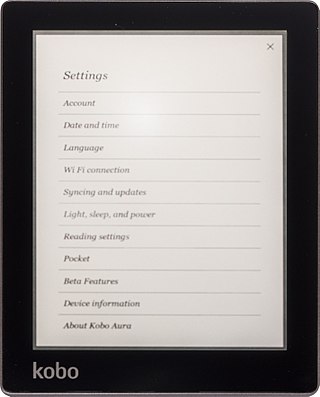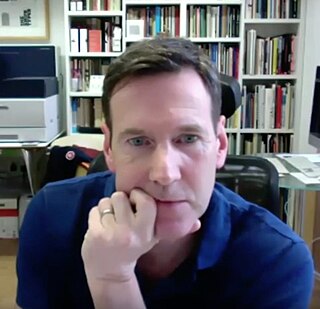
Typography is the art and technique of arranging type to make written language legible, readable and appealing when displayed. The arrangement of type involves selecting typefaces, point sizes, line lengths, line-spacing (leading), and letter-spacing (tracking), as well as adjusting the space between pairs of letters (kerning). The term typography is also applied to the style, arrangement, and appearance of the letters, numbers, and symbols created by the process. Type design is a closely related craft, sometimes considered part of typography; most typographers do not design typefaces, and some type designers do not consider themselves typographers. Typography also may be used as an ornamental and decorative device, unrelated to the communication of information.

Verdana is a humanist sans-serif typeface designed by Matthew Carter for Microsoft Corporation, with hand-hinting done by Thomas Rickner, then at Monotype. Demand for such a typeface was recognized by Virginia Howlett of Microsoft's typography group and commissioned by Steve Ballmer. The name "Verdana" is derived from "verdant" (green) and "Ana".

A typeface is a design of letters, numbers and other symbols, to be used in printing or for electronic display. Most typefaces include variations in size, weight, slope, width, and so on. Each of these variations of the typeface is a font.

Arial is a sans-serif typeface and set of computer fonts in the neo-grotesque style. Fonts from the Arial family are included with all versions of Microsoft Windows from Windows 3.1 on, some other Microsoft software applications, Apple's macOS and many PostScript 3 computer printers. The typeface was designed in 1982, by Robin Nicholas and Patricia Saunders, for Monotype Typography. Each of its characters has the same width as that character in the popular typeface Helvetica; the purpose of this design is to allow a document designed in Helvetica to be displayed and printed with the intended line-breaks and page-breaks without a Helvetica license. Because of their almost identical appearances, both Arial and Helvetica have commonly been mistaken for each other.

Courier is a monospaced slab serif typeface. The typeface was designed by Howard "Bud" Kettler (1919–1999). Initially created for IBM's typewriters, it has been adapted for use as a computer font, and versions of it are installed on most desktop computers.

Monotype Imaging Holdings Inc., founded as Lanston Monotype Machine Company in 1887 in Philadelphia by Tolbert Lanston, is an American company that specializes in digital typesetting and typeface design for use with consumer electronics devices. Incorporated in Delaware and headquartered in Woburn, Massachusetts, the company has been responsible for many developments in printing technology—in particular the Monotype machine, which was a fully mechanical hotmetal typesetter, that produced texts automatically, all single type. Monotype was involved in the design and production of many typefaces in the 20th century. Monotype developed many of the most widely used typeface designs, including Times New Roman, Gill Sans, Arial, Bembo and Albertus.

Georgia is a serif typeface designed in 1993 by Matthew Carter and hinted by Tom Rickner for the Microsoft Corporation. It was intended as a serif typeface that would appear elegant but legible when printed small or on low-resolution screens. The typeface is inspired by Scotch Roman designs of the 19th century and was based on designs for a print typeface on which Carter was working when contacted by Microsoft; this would be released under the name Miller the following year. The typeface's name referred to a tabloid headline, "Alien heads found in Georgia."

E Ink is a brand of electronic paper (e-paper) display technology commercialized by the E Ink Corporation, which was co-founded in 1997 by MIT undergraduates JD Albert and Barrett Comiskey, MIT Media Lab professor Joseph Jacobson, Jerome Rubin and Russ Wilcox.
Apple's Macintosh computer supports a wide variety of fonts. This support was one of the features that initially distinguished it from other systems.

An e-reader, also called an e-book reader or e-book device, is a mobile electronic device that is designed primarily for the purpose of reading digital e-books and periodicals.
Amazon Kindle is a series of e-readers designed and marketed by Amazon. Amazon Kindle devices enable users to browse, buy, download, and read e-books, newspapers, magazines and other digital media via wireless networking to the Kindle Store. The hardware platform, which Amazon subsidiary Lab126 developed, began as a single device in 2007. Currently, it comprises a range of devices, including e-readers with E Ink electronic paper displays and Kindle applications on all major computing platforms. All Kindle devices integrate with Windows and macOS file systems and Kindle Store content and, as of March 2018, the store had over six million e-books available in the United States.

An ebook, also known as an e-book or eBook, is a book publication made available in digital form, consisting of text, images, or both, readable on the flat-panel display of computers or other electronic devices. Although sometimes defined as "an electronic version of a printed book", some e-books exist without a printed equivalent. E-books can be read on dedicated e-reader devices, but also on any computer device that features a controllable viewing screen, including desktop computers, laptops, tablets and smartphones.

The Kobo eReader is an e-reader produced by Toronto-based Kobo Inc. The company's name is an anagram of "book". The original version was released in May 2010 and was marketed as a minimalist alternative to the more expensive e-book readers available at the time. Like most e-readers, the Kobo uses an electronic ink screen. The Arc tablet series, released between 2011 and 2013, was based on LCD technology instead.

Dalton Maag is an independent font foundry with offices in London, UK, and São Paulo, Brazil. It designs fonts for use in corporate identities, logos, and other text uses. Dalton Maag has a library of 30 retail fonts as of 2016 and offers custom font creation and modification services to its clients.

OpenDyslexic is a free typeface/font designed to mitigate some of the common reading errors caused by dyslexia. The typeface was created by Abelardo González, who released it through an open-source license. The design is based on DejaVu Sans, also an open-source font.
The Kobo Aura HD is a limited-edition Kobo eReader device designed and marketed by Kobo Inc. It was revealed 15 April 2013 and allowed for preorders the next day at a price of 169.99 USD/CAD. It arrived in stores in Canada and the United Kingdom on 25 April 2013. The marketing slogan of the Kobo Aura HD was "The eReader, reimagined." In October 2014 the Kobo Aura H2O was launched, it has a similar screen resolution to the Kobo Aura HD but has a waterproof coating. Kobo's CEO announced in March 2015 that the Kobo Aura HD was officially discontinued.

The Kobo Aura is the fifth generation of E-book readers designed and marketed by Kobo Inc. It was revealed 27 August 2013 at Kobo's Beyond the Book Event in New York City, along with three new Kobo Arc devices. Available for pre-order the same day, it cost $149.99 USD/CAD.

The Kindle Store is an online e-book e-commerce store operated by Amazon as part of its retail website and can be accessed from any Amazon Kindle, Fire tablet or Kindle mobile app. At the launch of the Kindle in November 2007, the store had more than 88,000 digital titles available in the U.S. store. This number increased to more than 275,000 by late 2008, and exceeded 765,000 by August 2011. In July 2014, there were over 2.7 million titles available. As of March 2018 there are over six million titles available in the U.S. Content from the store is purchased online and downloaded using either Wi-Fi or Amazon's Whispernet to bring the content to the user's device. One of the innovations Amazon brought to the store was one-click purchasing that allowed users to quickly purchase an e-book. The Kindle Store uses a recommendation engine that looks at purchase history, browsing history, and reading activity, and then suggests material it thinks the user will like.

Jeremy Tankard is a British type designer. Tankard has designed retail fonts independently and for FontShop and Adobe. Corbel was designed for Microsoft and has been included in Microsoft Office and Windows since 2006.
Kindle File Format is a proprietary e-book file format created by Amazon.com that can be downloaded and read on devices like smartphones, tablets, computers, or e-readers that have Amazon's Kindle app. E-book files in the Kindle File Format originally had the filename extension .azw; version 8 (KF8) introduced HTML5 & CSS3 features and have the .azw3 extension, and version 10 introduced a new typesetting and layout engine featuring hyphens, kerning, & ligatures and have the .kfx extension.















